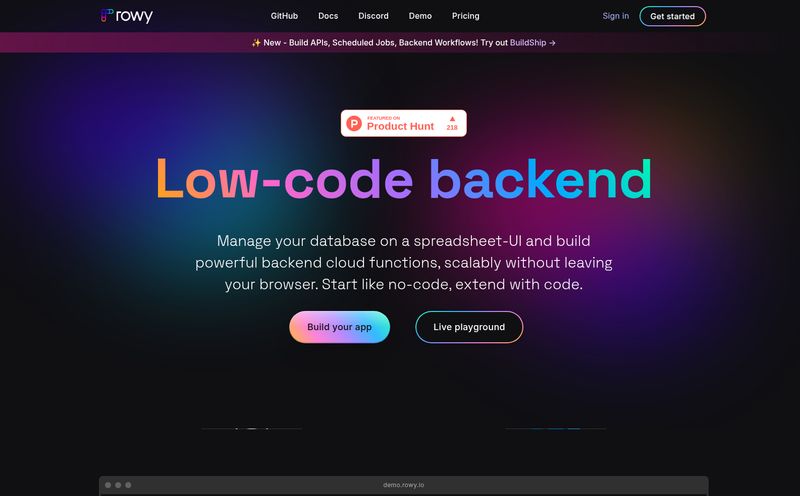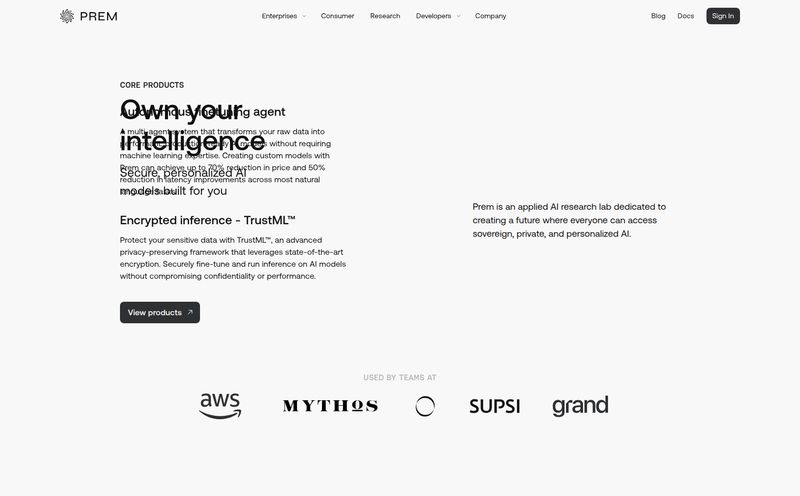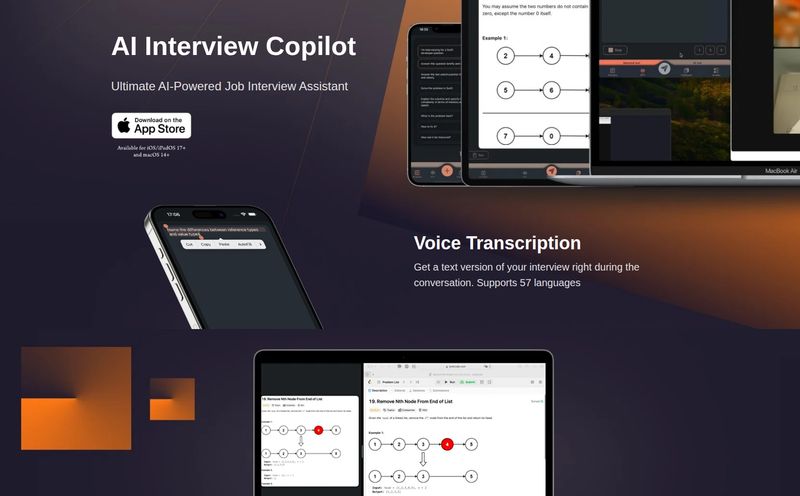I’ve been kicking around the SEO and tech world for a while now, and if there’s one thing I’ve learned, it’s that the digital landscape is in constant, dizzying motion. Trends come and go. Giants stumble. And every so often, a really cool, clever idea pops up that makes you go, “Huh. That’s smart.” For me, Actcast was one of those ideas.
It first landed on my radar as a super interesting player in the Internet of Things (IoT) space. It wasn’t just another platform for connecting your smart toaster to your phone. No, it was about bringing real, honest-to-goodness AI—deep learning, no less—to the humble edge device. But as with so many stories in tech, there’s been a plot twist. Let's get into what Actcast was, what made it special, and what its recent changes mean for the world of edge computing.
So, What Exactly Was Actcast's Big Idea?
At its heart, Actcast was an IoT platform designed to bridge the physical world with the web. Simple enough, right? But the secret sauce was how it did it. Instead of collecting tons of raw data from a device (like a security camera) and sending it all to a massive, power-hungry server in the cloud for analysis, Actcast did the thinking right there on the device itself. This is what we call edge computing.
Think of it like this: The old way (cloud computing) is like having a single, genius detective at a central headquarters. You have to send him every single piece of evidence, every photo, every witness statement from a thousand different crime scenes. It's slow, expensive, and a logistical nightmare. Actcast’s edge computing model is like having a well-trained local investigator at each crime scene. They can analyze the situation on the spot and just send a quick summary back to HQ: “Break-in confirmed. Suspect heading north.” It’s faster, cheaper, and way more private.

Visit Actcast
This whole process was powered by deep learning models running on small, affordable hardware. And the initial device of choice? The one and only Raspberry Pi. This was a brilliant move, in my opinion. It made sophisticated AI accessible not just to big corporations, but to hobbyists, small businesses, and startups. It democratized the tech, taking it out of the sterile data center and putting it into the hands of innovators everywhere.
The Genius of Pushing Intelligence to the Edge
The benefits of this edge-first approach are pretty significant, and they were the core of Actcast’s appeal. It wasn’t just a gimmick; it solved some real-world problems that have plagued IoT development for years.
Slashing Costs and Boosting Speed
Let's talk money. Cloud storage and data transfer costs can be brutal, especially if you’re dealing with high-bandwidth data like video streams. Continuously uploading 24/7 video from a dozen cameras to AWS or Azure will make your accountant cry. By processing data locally, Actcast drastically cut down on the amount of information that needed to be sent over the internet. You’re not sending the whole video, just the result of the analysis—a tiny packet of text data. This means lower server bills and less strain on your network. Plus, you get your results almost instantly, which is critical for applications that need real-time responses.
A Fort Knox for Your Data
Privacy is a beast, and in the age of GDPR and a generally more suspicious public, it's something you can't ignore. The Actcast model was a huge win for privacy. If you have a camera monitoring a sensitive area—say, a hospital room or a factory floor with proprietary machinery—the last thing you want is to stream that raw footage to a third-party server. It's a security risk waiting to happen. By keeping the analysis on the edge device, the sensitive raw data never leaves the premises. This is a massive selling point, and frankly, it's the only responsible way to handle a lot of IoT scenarios.
The Big "But": A Service in Transition
Okay, so Actcast had a great concept and some powerful advantages. So what's the catch? Well, this is where the story takes a turn. Recently, news has come out that points to a major shift for the platform. And when I say major, I mean fundamental.
The company behind Actcast, Idein Inc., announced that it would be ending the service for its marketplace functionality and phasing out credit card payments. This isn't just a minor update. This is the kind of announcement that signals the end of a service as we know it.
"After careful consideration, we have decided to terminate the Actcast service provided by our company... We will proceed with the termination of the service in stages." - from the official notice.
For an individual developer or a small business that relied on their marketplace to find and deploy AI models, this is a game-changer, and not in a good way. It suggests a pivot away from the public-facing, self-serve model that made it so accessible in the first place. Why? We can only speculate. Perhaps the business model wasn't sustainable, or maybe they're shifting focus entirely to large-scale enterprise clients who require bespoke solutions and don't use a public marketplace. It's a common story in the startup world. The dream of serving everyone sometimes gives way to the reality of serving a few, very large customers.
Who Was Actcast For (And Who Is It For Now)?
The original Actcast was a playground for a wide range of people. You had the tinkerer in their garage with a Raspberry Pi, building a smart cat-detector for their back door. You had the small business owner wanting to implement a people-counting solution for their shop without breaking the bank. And you had developers building innovative IoT solutions for clients. The common thread was a need for accessible, affordable, and private AI on the edge.
With the marketplace closing, the platform—in whatever form it continues to exist—is likely now for a much more exclusive club. It's probably geared towards established development partners and large enterprise customers who have direct relationships with the company. The DIY spirit is fading, replaced by a more traditional B2B model. And what about pricing? Unsurprisingly, with the halt on credit card payments and the service closure, any public pricing information has vanished. It's another sign that the platform has moved behind closed doors.
The Broader Lesson for the IoT World
The Actcast story is a perfect microcosm of the challenges facing the IoT industry. Building a platform is one thing; building a sustainable business around it is another entirely. The reliance on development partners and the inherent limitations of hardware are hurdles every player in this space has to overcome. It serves as a reminder that when you build your project on someone else's platform, you're also subject to their business decisions. It’s a risk we all take in this interconnected tech ecosystem.
But don't get me wrong. This isn't a eulogy. The idea behind Actcast is more relevant than ever. Edge computing is the future for so many applications, and the need for private, efficient AI isn't going away. This is just one chapter in a much larger book.
Actcast FAQ
- 1. What was Actcast?
- Actcast was an IoT platform service that specialized in running deep learning and AI models directly on edge devices, like the Raspberry Pi, to analyze real-world data locally instead of in the cloud.
- 2. What is edge computing?
- Edge computing is a model where data processing and analysis happen on or near the device where the data is generated (the "edge" of the network), rather than being sent to a centralized cloud server.
- 3. Is Actcast still available for new users?
- Based on the official announcements from its parent company, the public-facing Actcast service, including its marketplace and credit card payments, is being terminated. It is no longer available for new public sign-ups in its original form.
- 4. Why was Raspberry Pi support a big deal for Actcast?
- Supporting the Raspberry Pi was significant because it's a very low-cost, widely available, and popular single-board computer. This made Actcast's advanced AI capabilities accessible to a huge community of developers, students, and hobbyists, not just large companies.
- 5. What were the main advantages of using Actcast's platform?
- The primary advantages were cost reduction (by minimizing data transfer to the cloud), increased privacy (by processing sensitive data locally), and low latency for faster, real-time responses from IoT devices.
- 6. What does the suspension of marketplace services mean?
- It effectively means the end of the self-serve model where users could easily browse, select, and deploy pre-built AI models to their devices. It suggests a pivot to a closed, enterprise-focused system where solutions are likely custom-built through direct partnerships.
Final Thoughts on a Platform at a Turning Point
So, where does this leave us? The story of Actcast is a fascinating one. It's a tale of a brilliant, forward-thinking idea that ran into the hard realities of the market. It championed a more efficient and private vision for IoT, and for that, it deserves a ton of credit. While the platform's public journey seems to be ending, the principles it was built on are stronger than ever.
The future is on the edge. The need for intelligent devices that respect our privacy and our budgets will only grow. Actcast may have been one of the early pioneers, and like many pioneers, its path was tough. But the trail it helped blaze will be followed by many others. And that's an exciting prospect for all of us in the tech space.
Reference and Sources
- Idein Inc. Official Notice of Actcast Service Termination (Japanese): https://actcast.io/docs/v/ja/service/service-termination-notice
- IBM: What is Edge Computing?: https://www.ibm.com/topics/edge-computing
- The Official Raspberry Pi Website: https://www.raspberrypi.com/



